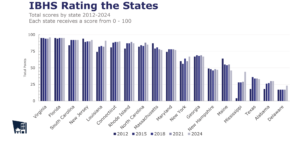
While small commercial insurers focus on landing new business and hitting growth targets in a fast-paced market, unknown risks can quietly emerge in their renewal book. An evolving business may outgrow or drift from the profile that shaped the original policy written.
The initial underwriting data may not have been fully vetted and verified, and even the best data can go stale by renewal. A building supply store may diversify its business to include installing hardwood floors, and obsolete data could miss the new risk until it emerges in the form of a claim.
Small commercial data challenges could leave millions of small businesses with inadequate or misaligned coverage. Subsequently, carriers may be collecting too little premium for the risk. Premium leakage on businessowners policies driven by misclassification or missing information on the full scope of the insureds’ business is a major driver for adverse selection. These downstream effects could even spill over to reinsurance programs, as an aggregate portfolio can be exposed to more risk than expected.
Capturing the real risk
Aligning an insurer’s portfolio and risk appetite begins with understanding what’s already in the book of business. A small commercial portfolio analysis could uncover new risks, reveal opportunities to true up coverages, and show where rate increases may be warranted. Structured, actionable portfolio can help insurers:
- Find misclassified risks
- Identify policies that don’t fit with an insurer’s risk appetite
- Pinpoint industry-specific hazards all the way to the policy level
Download the white paper, Book smart: Measuring your true risk, to read about one insurer’s journey to a cleaner small commercial portfolio and learn how Verisk can help insurers get a fuller picture of their risk profile so they can better execute their business strategies.




















 Time-Tested Loss Reserving Methods Challenged: AM Best
Time-Tested Loss Reserving Methods Challenged: AM Best  Executives on the Move at AIG, White Mountains, Vermont Mutual
Executives on the Move at AIG, White Mountains, Vermont Mutual  Uncertainty Keeps Prices Up; No Prior-Year Loss Development: Travelers
Uncertainty Keeps Prices Up; No Prior-Year Loss Development: Travelers  Cat Losses, Auto and HO Price Hikes Continue at Allstate
Cat Losses, Auto and HO Price Hikes Continue at Allstate 



